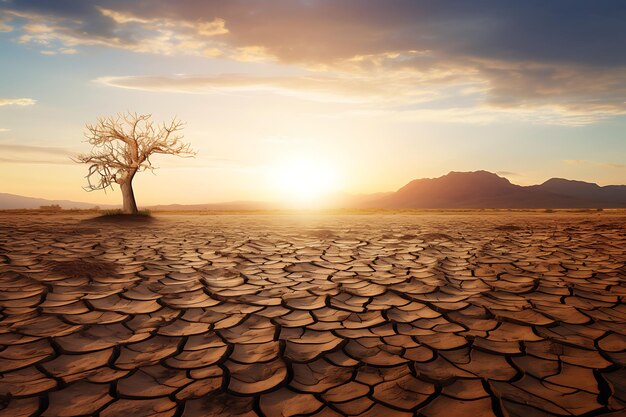In the vast archipelago of Indonesia, where over 17,000 islands are draped like vibrant jewels across the cerulean tapestry of the Indian and Pacific Oceans, a silent crisis looms. The mesmerizing allure of pristine beaches, once the pride of this tropical paradise, faces an inexorable threat: global warming. As rising sea levels gradually consume the coastline, the enchanting siren call of the beach is becoming a lament for what may soon be lost forever. This phenomenon known as coastal erosion is not merely a tale of nature’s fury; it is a clarion call for humanity, highlighting the fragility of our existence.
Indonesia’s idyllic beaches, characterized by soft sands and crystal-clear waters, have historically represented both beauty and bounty, serving as a crucial part of the local economy through tourism and fishing. The local population, comprised of diverse cultures and traditions, has grown symbiotically with these coastal ecosystems, celebrating their existence through festivals, rituals, and everyday life. However, as the relentless hands of climate change tighten their grip, the vibrancy of these coastal environments begins to fade, much like the colors of a sunset swallowed by dusk.
One of the most poignant examples of this alarming trend can be observed on the island of Java. Here, the town of Semarang is increasingly defenseless against the encroaching waters. Streets, once bustling with market vendors and the laughter of children, now succumb to the tide during high water seasons, rendering patches of land indistinguishable from the ocean. This unsettling transformation resembles a painting being consumed by an insatiable tide, leaving the artist—a community of people—grasping for the remnants of their lived experiences.
The underlying causes of Indonesia’s vanishing beaches are manifold, yet chief among them is the dreary monolith of climate change, primarily driven by human activity. Research indicates that the rising global temperatures result in the melting of polar ice caps and glaciers, leading to an undeniable increase in sea levels. In island nations like Indonesia, where the average elevation is often low, even a slight rise in sea levels can have cataclysmic consequences.
In addition to sea-level rise, ocean acidification exacerbates the plight of marine ecosystems. Coral reefs, often termed the “rainforests of the sea,” serve as vital habitats for countless marine species and protect coastlines from erosion. Yet, as the oceans absorb more carbon dioxide, the water’s chemistry alters, leading to coral bleaching—a phenomenon that strips these underwater gardens of their vibrancy and leads to the death of critical marine life. The once-thriving reefs of Raja Ampat are an eloquent testament to this unraveling; vibrant colors have dulled into shades of grey, and the marine biodiversity that once flourished could be irreparably lost.
The plight of the beaches extends beyond the natural environment; it strikes at the heart of Indonesia’s socio-economic fabric. Coastal communities often rely on fishing and tourism, two sectors already destabilized by climate change. Fishermen, whose livelihoods are intricately linked to these rich waters, face dwindling fish stocks as habitats degrade. Meanwhile, once-thriving tourism industries experience a dismal downturn as beaches recede and storm surges become commonplace, deterring visitors from the splendor of Bali and beyond.
Local governments grapple with this daunting predicament, attempting to integrate climate adaptation strategies and sustainable development. However, the challenges are immense. Elevation projects, beach nourishment, and mangrove restoration have emerged as popular but temporary solutions. Although these measures offer a glimmer of hope, they cannot entirely reverse the impacts that global warming imposes. This dilemma emphasizes the importance of a concerted global effort—local actions must weave into an international tapestry that holds conservation and sustainability at its core.
In the face of adversarial tides, education becomes a beacon of hope. Local communities are increasingly embracing the urgency of the climate crisis, mobilizing grassroots movements that advocate for environmental stewardship. Coastal awareness campaigns illuminate the reality of rising sea levels and galvanize collective action. Schoolchildren are learning about sustainable practices, understanding their role as stewards of the fragile ecosystems that cradle their homes. The narratives of loss inspire a newfound resolve; communities engage in beach clean-ups, tree-planting initiatives, and advocacy for better policies aimed at mitigating climate change impacts.
Moreover, the resounding voice of indigenous wisdom must not be muted amidst this struggle. Indigenous communities possess an intrinsic connection to the land and waters, navigating the intricacies of their environments for generations. By synthesizing time-honored practices with contemporary scientific knowledge, more harmonious solutions can be reached—ones that respect both nature’s limits and humanity’s needs.
The conundrum of Indonesia’s disappearing beaches serves as a microcosm of the global climate crisis. The loss experienced within these borders reverberates beyond national confines, reminding us that the fate of our planet is inextricably linked. As the sirens of caution echo louder through coastal communities, the collective responsibility borne by humanity cannot be overlooked. Our current trajectory demands transformation—both in mindset and action. Each wave that laps against the shore holds a profound truth: we are stewards of our planet, charged with the duty to safeguard its wonders for generations yet to come.
Indonesia’s beaches may falter under the weight of climate change, but in this reality lies an extraordinary narrative of resilience and hope. The struggle against global warming is not a solitary battle; it is a harmonious chorus where the whispers of loss intertwine with the roars of determination, urging us all to act before the sea swallows the tales of our beautiful beaches entirely.







